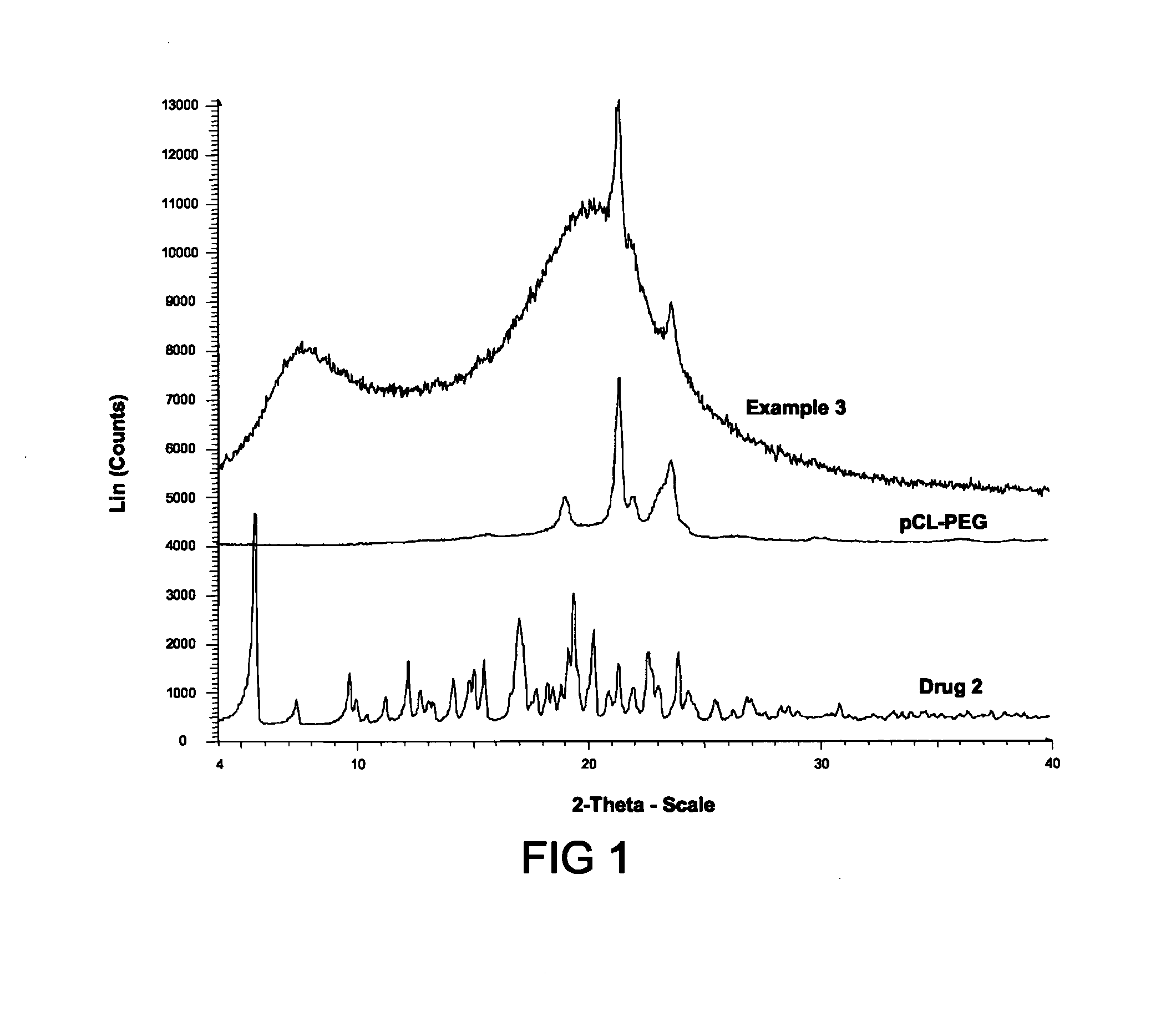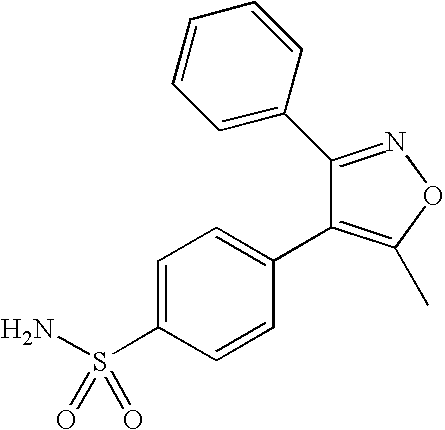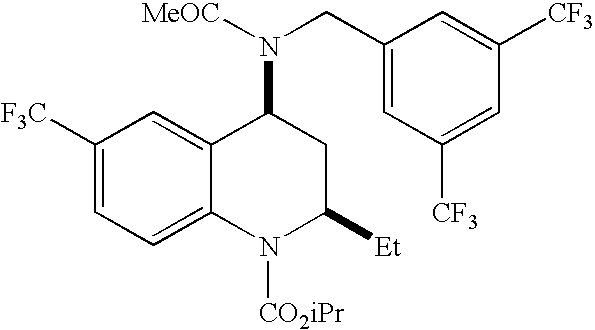Nanoparticles comprising a non-ionizable cellulosic polymer and an amphiphilic non-ionizable block copolymer
a cellulosic polymer and amphiphilic technology, applied in the field of nanoparticles, can solve the problems of difficult formation of very small particles, material adverse physiological effects, undesirable agglomeration of nanoparticles, etc., to improve the bioavailability of drugs, improve performance and stability, and reduce the rate of drug crystallization
- Summary
- Abstract
- Description
- Claims
- Application Information
AI Technical Summary
Benefits of technology
Problems solved by technology
Method used
Image
Examples
example 1
[0113]Nanoparticles containing valdecoxib (“Drug 1”) were prepared as follows. First, 20.1 mg valdecoxib, 40.3 mg ethylcellulose, and 20.0 mg pCL-PEG were dissolved in 4 mL ethyl acetate to form an organic solution. The organic solution was then poured into 20 mL deionized water and emulsified for 4 min using a Kinematica Polytron 3100 rotor / stator (Kinematica AG, Lucerne, Switzerland) at 10,000 rpm (high-shear mixing). The solution was further emulsified using a Microfluidizer (Microfluidics [Newton, Mass.] model M-110L F12Y with ice bath and cooling coil), with an inlet pressure of 80 psi, for 4 minutes (high-pressure homogenization). The ethyl acetate was removed from the emulsion using a rotary evaporator, resulting in an aqueous suspension of nanoparticles.
Light Scattering Analysis
[0114]The particle size of the nanoparticles in the aqueous suspension was determined using dynamic light scattering (DLS) as follows. First, the aqueous suspension was filtered using a 1 μm glass mem...
example 2
[0118]Nanoparticles containing Drug 2 were prepared using a precipitation method as follows. First, a water-miscible organic solution was formed by dissolving 250.9 mg Drug 2, 517.0 mg ethylcellulose, and 250.4 mg pCL-PEG in 100 mL tetrahydrofuran (THF). The organic solution was mixed using a vortex mixer for 10 seconds. To form the nanoparticles, a glass pipette containing the organic solution was inserted under the surface of an aqueous solution consisting of 900 mL of filtered water, and delivered into the stirring vortex all at once, rapidly forming nanoparticles. The THF was removed from the suspension using a rotary evaporator (40° C., 200 rpm, 30 min), resulting in an aqueous suspension of nanoparticles.
Light Scattering Analysis
[0119]The aqueous suspension of Example 2 was filtered using a 1 μm glass membrane filter, and analyzed using DLS. The average cumulant diameter of the nanoparticles in aqueous suspension was 113 nm, with a polydispersity of 0.11.
[0120]The concentratio...
example 3
[0123]Nanoparticles containing Drug 2 were prepared using a precipitation method as follows. A water-miscible organic solution was formed by dissolving 1.2514 g Drug 2, 2.5015 g ethylcellulose, and 1.2517 g pCL-PEG in 500 mL THF. The organic solution was mixed and added to 1.5 L aqueous solution, as described in Example 3. The solvent was removed by rotary evaporation, resulting in an aqueous suspension of nanoparticles.
Light Scattering Analysis
[0124]The aqueous suspension of Example 3 was filtered using a 1 μm glass membrane filter, and analyzed using DLS. The average cumulant diameter of the nanoparticles in aqueous suspension was 115 nm, with a polydispersity of 0.21.
[0125]A smaller batch of nanoparticle suspension was made using this precipitation method as described above (with 1 mL organic solution into 9 mL water). DLS analysis 18 hours after the nanoparticle suspension was formed showed that the average cumulant diameter was 135 nm, with a polydispersity of 0.20. The suspens...
PUM
| Property | Measurement | Unit |
|---|---|---|
| Temperature | aaaaa | aaaaa |
| Size | aaaaa | aaaaa |
| Density | aaaaa | aaaaa |
Abstract
Description
Claims
Application Information
 Login to View More
Login to View More - R&D
- Intellectual Property
- Life Sciences
- Materials
- Tech Scout
- Unparalleled Data Quality
- Higher Quality Content
- 60% Fewer Hallucinations
Browse by: Latest US Patents, China's latest patents, Technical Efficacy Thesaurus, Application Domain, Technology Topic, Popular Technical Reports.
© 2025 PatSnap. All rights reserved.Legal|Privacy policy|Modern Slavery Act Transparency Statement|Sitemap|About US| Contact US: help@patsnap.com



